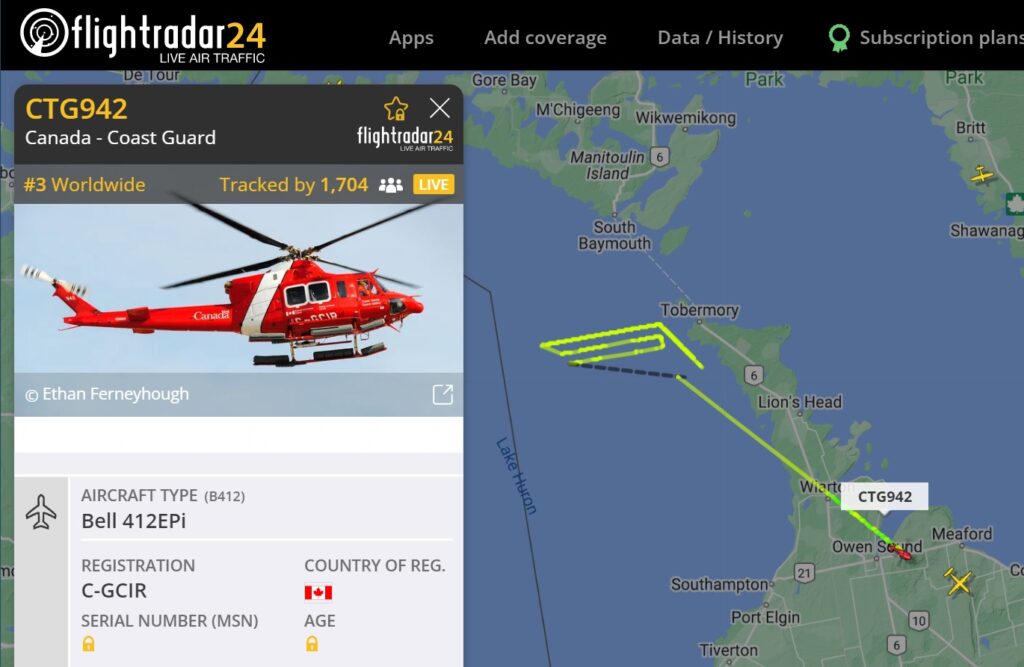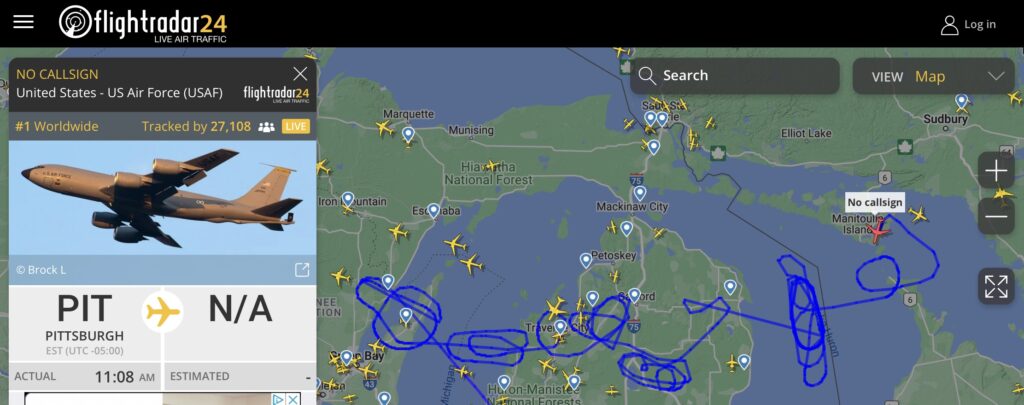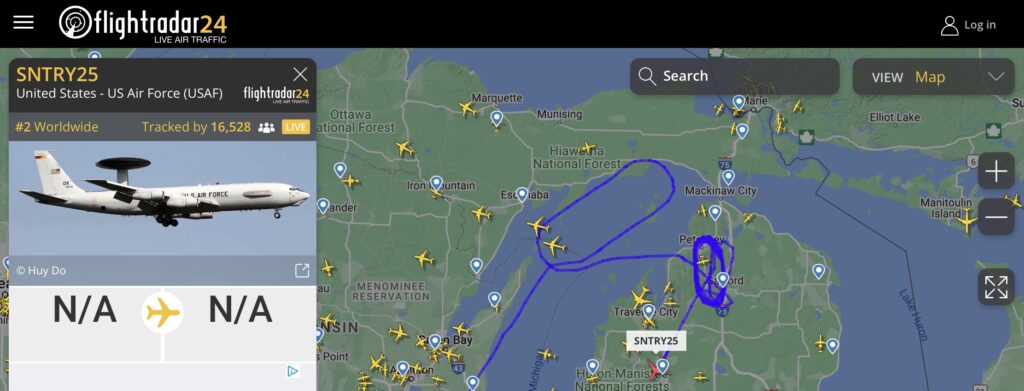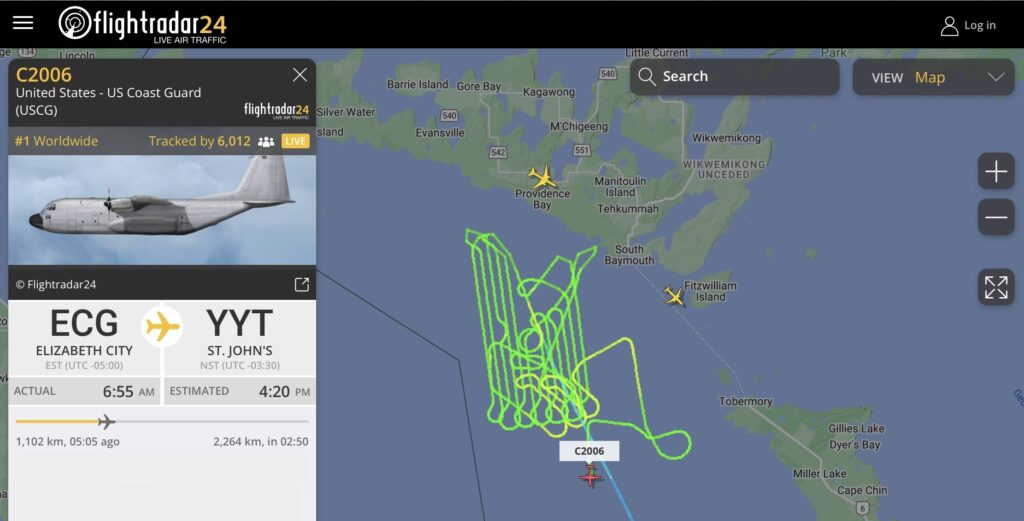Of course, I’m interested in learning more about the recent aerial incidents over North America. I hope the U.S. and Canadian governments release more information and images, soon. Surely, someone had a camera. 🙂
Recovery in Alaska and Yukon will be difficult. The objects are relatively small, the weather has been bad and the days are short (about six hours of daylight).
Flightradar24 has been a good resource along with ADS-B Exchange. Here are a few screen snaps of the Lake Huron incident (February 12, 2023).
The U.S. has flown a variety of aircraft, especially tankers. Tankers have aircrew who have a lot of experience operating in commercial airspace. Tankers are well-suited for the job, i.e., relatively slow. Plus, their avionics have been upgraded for multiple roles including Link 16 and intelligence, surveillance and reconnaissance (ISR). Link 16 assists information fusion for military and civilian decision makers.
Tankers are the most visible on Flightradar24 or ADS-B Exchange. The first track above is a KC135T (shout out to Pittsburgh ANG) following the unidentified object. Its path is similar to what I observed during the Chinese balloon incident. They squawk loud and clear for civilian ATC. Fighter jets? No. That’s why the FAA issues a temporary flight restriction (TFR) or ground stop when fast movers are operating. If you want to catch fighters, try ADS-C Exchange or DIY (if you have line of sight).
In addition to tankers, the U.S. has launched a variety of ISR aircraft. The Lake Huron incident was monitored by an E-3 AWACS (Sentry). None of these aircraft are strangers to people monitoring the airspace near Ukraine!
After action is recovery. The HC-130J Super Hercules is the tool for the job. Aircrew are trained for low-level night operations and can drop illumination flares. The avionics suite is extensive including night vision. It’s dark up there in the Yukon and Prudhoe Bay. The HC-130J can conduct air-to-air helicopter refueling, too. An USAF HC-130 was observed over the Prudhoe Bay incident (February 10, 2023).
Let’s give the professionals a chance to do their jobs. Hopefully, more information will be quickly forthcoming. In the meantime, read my posts about do-it-yourself ADS-B monitoring. 🙂

[Update] Canada’s turn! Looking at the Lake Huron depth chart, the object may be under 300+ feet of water. This will not be an easy recovery.
Copyright © 2023 Paul J. Drongowski



